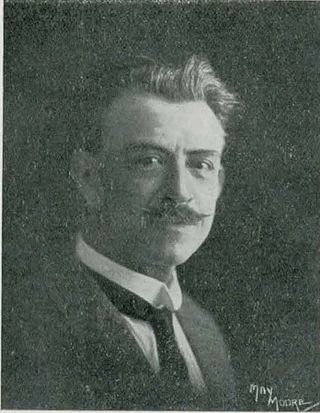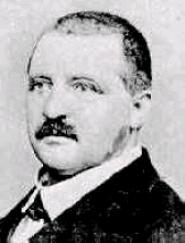Related Research Articles
Robert Wilfred Levick Simpson was an English composer, as well as a long-serving BBC producer and broadcaster.

The Symphony No. 2 in D major, Op. 36, is a symphony in four movements written by Ludwig van Beethoven between 1801 and 1802. The work is dedicated to Karl Alois, Prince Lichnowsky.

Ludwig van Beethoven completed his String Quartet No. 12 in E♭ major, Op. 127, in 1825. It is the first of his late quartets. Commissioned by Nicolas Galitzin over a year earlier, the work was not ready when it was scheduled to premiere. When it finally premiered by the Schuppanzigh Quartet, it was not well received. Only with subsequent performances by the Bohm Quartet and the Mayseder Quartet did it begin to gain public appreciation.
Clive Edward Hazzard Strutt is an English composer. He was born in Aldershot, Hampshire, England, and he was educated at Farnborough Grammar School.

Alfred Francis Hill CMG OBE was an Australian-New Zealand composer, conductor and teacher.

The Symphony No. 9 in D minor, WAB 109, is the last symphony on which Anton Bruckner worked, leaving the last movement incomplete at the time of his death in 1896; Bruckner dedicated it "to the beloved God". The symphony was premiered under Ferdinand Löwe in Vienna in 1903.

Anton Bruckner's String Quintet in F major, WAB 112 was composed in 1878/79 in Vienna.

The three String Trios, Op. 9 were composed by Ludwig van Beethoven in 1797–98. He published them in Vienna in 1799, with a dedication to his patron Count Johann Georg von Browne (1767–1827). They were first performed by the violinist Ignaz Schuppanzigh with two colleagues from his string quartet. According to the violinist and conductor Angus Watson, these were probably Franz Weiss on viola and either Nikolaus Kraft or his father Anton on cello. Each of the trios consists of four movements:
String Quartet No. 1 in B-flat major "Maori Quartet", Stiles 1.2.3.3 SQ1 is the first of Alfred Hill's seventeen string quartets. Its composition began before 1892, it was completed after 1896 and premiered only on 18 May 1911 in Sydney.
Alfred Hill composed his String Quartet No. 3 in A minor "The Carnival", Stiles 1.2.3.3 SQ3, in 1912, while he was a member of the Austral String Quartet. The manuscript score is preserved in the National Library of Australia. In 1955, Hill transformed the quartet into his Symphony No. 5. The quartet is composed in four movements with an average duration of 20 minutes.
String Quartet No. 2 in G minor "A Maori Legend in Four Scenes", Stiles 1.2.3.3 SQ2, often called "Maori Quartet", was composed by Alfred Hill in 1907–1911 and premiered immediately in 1911. It is dedicated to Earnest [sic] Wunderlich — "in slight appreciation". The first two quartets were published together by Breitkopf & Härtel in 1913. Each of them used to be referred as Maori, a feature that can lead to confusion. Today the first one is called Maori, while for the second the longer subtitle is retained.
Violin Sonata No. 4 in C minor "Maori Sonata", Stiles 1.2.1.6 So4, is a sonata for violin and piano by Alfred Hill composed ca.1909. It was premiered on 6 April 1910 by Cyril Monk and Laurence Godfrey Smith in the YMCA Hall, Sydney. Its approximate duration is 18 minutes.
String Quartet No. 4 in C minor, Stiles 1.2.3.3 SQ4, was completed by Alfred Hill on 25 July 1916 in Neutral Bay, Sydney. It is dedicated to Henri Verbrugghen and his Verbrugghen String Quartet. It is Hill's first non-program string quartet. The first two movements were transcribed for orchestra in 1955 forming the basis of the Symphony No. 4 "The Pursuit of Happiness" in which this music turns to have a program.
Symphony No. 4 in C minor "The Pursuit of Happiness", Stiles 1.3.4.1 SyP, was finished by Alfred Hill in 1954 or 1955. Its first two movements were arranged from Hill's String Quartet No. 4 (1916), while the last one derives from the finale of his String Quartet No. 17. The symphony is dedicated "to my esteemed friend Henry Kripps", a prominent Australian conductor. Its approximate duration is 20 minutes.
Symphony No. 1 in A major, Op. 4 was composed by George English in early 1932. It uses Romantic material and shows various influences including Brahms, Wagner, Richard Strauss, Elgar, Delius and Faure. It was never performed after 1945, and, according to Rhoderick McNeill, it is interesting and deserves a revival. The approximate duration is 28 minutes.
Symphony No. 1 in G minor, "Sérieuse", is an orchestral work by Swedish composer Franz Berwald. It was premiered on December 2, 1842 in a concert at the Royal Opera, Stockholm given by the Swedish Royal Court Orchestra conducted by the composer's cousin Johan Fredrik Berwald. This first performance was not a success, leading to this symphony being the only one of Berwald's mature symphonies to be performed during his lifetime;.
String Quartet No. 5 in E-flat major "The Allies", Stiles 1.2.3.3 SQ5, was completed by Alfred Hill on 24 June 1920 in Sydney. It is dedicated to Henri Verbrugghen, whose quartet gave the first public performance of the composition on 2 March 1921. The music of the quartet presents four nations who were allies during World War I. It was subsequently arranged by Hill for string orchestra as his Symphony No. 11 "The Four Nations". The approximate duration of the quartet is 29–33 minutes, which makes it one of the most substantial quartets composed by Hill.
Symphony No. 11 in E-flat major "The Four Nations" for string orchestra, Stiles 1.3.3.1 SyFN, was arranged by Australian composer Alfred Hill from his String Quartet No. 5 "The Allies" at some point in 1950s, but the precise date remains unknown, and there is no information about the first performance. The music of the symphony follows that of the original String Quartet, except for the Finale being 4 bars shorter than in the quartet, due to a minor truncation of the melody of the main subject at each repeat of it. The most obvious difference is the addition of the double bass part. Hill also altered the title of the composition.
String Quartet No. 6 in G major "The Kids", Stiles 1.2.3.3 SQ6, by Alfred Hill bears dedication: "for the young fry at the New South Wales State Conservatorium of Music". It was most likely written for the student string quartet groups at the Conservatorium mentored by the composer. The manuscript is dated 3 September 1927. Its technical demands being limited, it is an accessible for amateurs composition. The quartet is set in earlier style, reminiscent of Haydn, Schubert, and other classical composers. With approximate duration of only 15–16 minutes, this is the shortest of all Hill's quartets.
String Quartet No. 8 in A major, Stiles 1.2.3.3 SQ8, by Australian composer Alfred Hill was finished half month after his Seventh: the manuscript score and parts, which are preserved in the National Library of Australia, are dated 6 December 1934. While the previous quartet was a somewhat transitive composition from his middle period, with the Eighths one starts counting Hill's late quartets. It is thematically unified and has many impressionistic features. In 1950s Hill arranged it into a string symphony, the first known performance of which was on 27 March 1957. The approximate duration of the quartet is 25–28 minutes.
References
- ↑ Allan Stiles. A Catalogue of the Music of Alfred Hill
- 1 2 3 4 5 6 Lam, Y. C. (2006, June). Analytical study of Alfred Hill’s String Quartet no. 2 in G minor (Thesis, Master of Arts). University of Otago
- 1 2 Stiles Music Publications
- 1 2 3 4 5 6 7 Rhoderick McNeill (23 March 2016). The Australian Symphony from Federation to 1960. Routledge. pp. 51–56. ISBN 978-1-317-04087-3.
- ↑ Stephen Pleskun (17 January 2012). A CHRONOLOGICAL HISTORY OF AUSTRALIAN COMPOSERS AND THEIR COMPOSITIONS: (VOLUME 1: 1901–1954). Xlibris Corporation. p. 158. ISBN 978-1-4653-8226-9.
- ↑ Wellington Chamber Orchestra official site